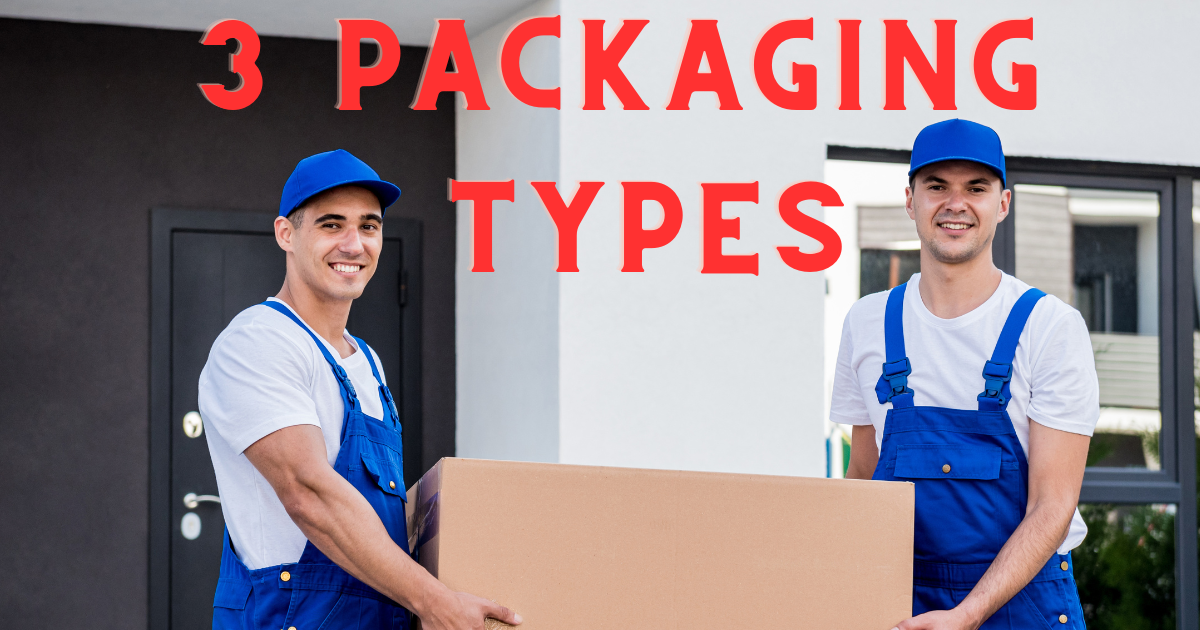London, the city of red buses, black cabs, and endless hustle-bustle! But have you ever thought about how packaging plays a crucial role in this fast-paced world? From delivery boxes to decorative gift wraps, packaging types are as diverse as the London removals. Welcome to our article 3 Packaging Types that will take you on an intriguing journey through the world of packaging.
Understanding the Importance of Packaging
Can you imagine buying one of your favorite products without its distinctive packaging? Imagine, for instance, that mobile phone you recently acquired from the London removals. The excitement begins right from unwrapping that brand-new box; it’s part of your consumer journey and adds a valuable dimension to your purchasing experience. This minor yet significant detail underscores the importance of packaging.
Furthermore, the way products are presented is integral in shaping customer perceptions and driving sales. Packaging is essentially the bridge between consumers and brands; it’s more than just a practical means for transportation or storage like those used by London removal companies. Effective packaging communicates to potential buyers what they can expect from product usage. In fact, innovative designs even have the power to become cultural icons, contributing significantly to how we remember certain periods or trends within society—it really is that powerful!
Type 1: Rigid Packaging – Advantages and Uses
The world of packaging has seen a multitude of changes over the centuries, but one aspect that has stood the test of time is rigidity. Discover how London removals benefit from utilizing rigid packaging. The critical point to this material isn’t just its robustness but also its extraordinary adaptability and versatility.
The most significant advantage of rigid packaging revels in much more than merely moving goods safely across London; it shifts the paradigm by providing superior protection for delicate items against damages that might occur during transportation. This type isn’t just about durability and strength; it’s also about presentation – imagine opening a box to find your precious safe, sound, and beautifully presented! Rigid packing takes London removals up a notch strategically blending function with aesthetics. Its varied uses range not merely in moving households but extend to important segments like food, pharmaceuticals, electronics, and luxury goods shipping – proving itself as an unrivaled jack-of-all-trades in the world of packaging.
Type 2: Flexible Packaging – Benefits and Applications
Flexible packaging is powering a revolution in multiple industries worldwide and the applications are only becoming more diverse. It’s a strikingly innovative solution that contributes to making everything from removals in London to food storage remarkably efficient. Flexibility, as the name states, is certainly one of its most significant advantages, enabling businesses to devise customer-centric packaging solutions that suit specific product needs uniquely.
It does not stop at flexibility; sustainable use of resources underscores another massive win for flexible packaging. By adopting this approach, companies can drastically reduce their carbon footprint – an aspect that holds increasing value today as we grapple with climate change issues. Therefore, whether it’s facilitating stress-free removals in London or minimizing waste through superior sealability features for food products globally, flexible packaging has unmistakable benefits driving its widespread application across various sectors.
Type 3: Semi-Rigid Packaging – Pros and Key Areas of Usage
One of the key advantages of semi-rigid packaging is its ability to provide excellent protection for fragile items during transportation. With a combination of rigid materials, such as plastic or metal, and flexible components like cushioning materials or foam inserts, this type of packaging can absorb shocks and prevent damage from impact. This makes it ideal for shipping delicate electronics, glassware, or even perishable food items. Unlike fully rigid packaging options, semi-rigid solutions offer a balance between protection and flexibility.
Another area where semi-rigid packaging excels is in enhancing product presentation on retail shelves. The controlled rigidity of the package allows for easy display without compromising the aesthetics of the product inside. By maintaining its shape and structure while giving customers a clear view of what’s inside, this type of packaging can attract attention and drive sales. Many industries have adopted semi-rigid packaging for their high-end products such as cosmetics, luxury goods, or specialty food items because it exudes an air of elegance and sophistication that appeals to discerning consumers.
In conclusion, semi-rigid packaging offers numerous benefits in terms of protecting fragile goods during transit as well as improving product presentation in retail settings. Its unique combination of rigidity and flexibility strikes a perfect balance between safeguarding precious contents from external forces while still allowing for visually appealing displays that captivate customers’ attention. Whether you are running an e-commerce business shipping delicate items or looking to elevate your brand presence on store shelves with enticing visual merchandising strategies – consider exploring the possibilities offered
Choosing the Right Packaging for Your Product
Choosing the right packaging for your product is a crucial decision that can greatly impact your business’s success. It goes beyond just protecting the item during shipping; it also plays a significant role in attracting and engaging customers. One key aspect to consider is the size and shape of your product. Customized packaging that perfectly fits your item not only provides better protection but also gives it a sleek and professional appearance, making it stand out from the competition.
Additionally, considering sustainability aspects when choosing packaging is becoming increasingly important in today’s eco-conscious society. Opting for environmentally friendly materials, such as recyclable or biodegradable options, can not only enhance brand reputation but also contribute to reducing waste and environmental impacts. Showing customers that you care about sustainability can create a positive image for your brand, potentially leading to increased customer loyalty and support.
Furthermore, don’t underestimate the power of branding through packaging design. Your packaging should reflect your brand identity and resonate with your target audience. Eye-catching designs with bold colors or unique shapes can help create a memorable experience that improves customer retention and generates word-of-mouth marketing. Remember, in an overly saturated market, the right packaging design could be what sets you apart from competitors and entices potential customers to choose your product over others.
In conclusion, when choosing the right packaging for your product, it is essential to consider factors such as size, sustainability, and branding. A well-thought-out packaging solution not only protects your product but also attracts customers’ attention and enhances their overall experience.
The Environmental Impact of Different Packaging Types
When considering the environmental impact of packaging, it is essential to examine the different types available. Plastic packaging has long been a hot topic due to its negative impact on ecosystems and its slow rate of decomposition. However, recent studies have shown that cardboard and paper packaging can also have significant ecological costs. The production of these materials often entails deforestation and uses substantial amounts of water and energy.
An alternative gaining popularity is biodegradable packaging made from plant-based materials such as sugarcane or cornstarch. While this type of packaging does break down more easily than plastic or paper, there are concerns about the resources required for their production. Additionally, the availability and accessibility of industrial composting facilities play a crucial role in determining whether biodegradable packaging actually ends up being beneficial to the environment.
As consumers become increasingly aware of their own environmental footprint, it is necessary for companies to prioritize sustainable options for packaging. Moves towards reusable containers or innovative materials like mushroom-based packaging offer exciting possibilities for reducing waste without compromising product quality or safety. It is clear that making informed choices about our packaging can significantly contribute to a greener future in an industry historically associated with excessive waste generation and pollution.
Conclusion: Summarizing the Importance of Appropriate Packaging
In conclusion, appropriate packaging plays a crucial role in various aspects of our lives. It not only protects and preserves products but also ensures their quality and safety. Additionally, it contributes to the overall customer experience by providing convenience and ease of use. Moreover, appropriate packaging helps to reduce waste and environmental impact through efficient materials and design choices. As consumers, we should be mindful of the importance of choosing products with appropriate packaging and support companies that prioritize sustainable packaging practices. By doing so, we can help create a more sustainable future for generations to come.

